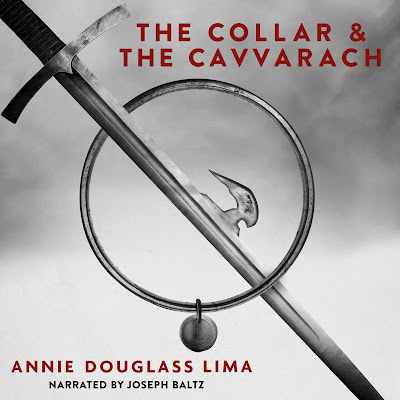
An Unexpected Exploit, by Kandi J Wyatt
Cover Reveal and Guest Post
An Unexpected Exploit
As an Indie author, I know how difficult it can be to find readers. That’s why I open up my blog for Cover Reveals, Guest Posts, and Excerpts from other indie authors. Today I bring you all three from fantasy author Kandi J Wyatt. People often ask writers where their ideas comes from. Read on as Kandi shares the poignant origins of An Unexpected Exploit.
Guest Post: Footprints Across the Sand and into a Book
By Kandi J Wyatt
Growing up in a Christian home in the early ‘80’s I saw the poem Footprints in the Sand repeatedly. It was on mugs, magnets, posters, calendars, and everywhere I looked in the Christian bookstores in our area. I fell in love with the poem. It was so awe inspiring to realize that during those dark times in my life, God had come alongside, picked me up and carried me. Not until later on in my adult life did I realize why it resonated with me so well. At the time, all I knew was I could relate to a loving father who picked up a small child and carried her in his arms.
One summer at church camp, we had a guest speaker. His name was Paul Powers. Paul wasn’t his original name. After he came to know Christ, he legally changed his name to Paul to show the transformation that had occurred in his heart. He said he had been like Saul before he met Jesus, and a name change was in order. I remember him as a very dynamic speaker for teens, but one night, he allowed his wife, Margaret, to speak.
She shared how when she’d first met Paul he was still struggling with trying to be the person he should be, and yet he asked her to marry him. As they stood on a lakeshore as a young couple, she wavered in her answer. What would life hold for her, especially, if he turned away from the Lord? In answer to her indecision, Paul scooped her up in his arms and began to carry her. He told how he’d be there for her through thick and thin.
Later, Margaret went home and wrote a poem about that moment. The paper was placed in a box in their attic and one day, their house was broken into. The thieves took their belongings, including the box with her poem. Life passed on, but one day she was in the store and saw her poem on an item! It stated, ‘author unknown’. She fought to receive the credit for her poem, but even to this day there is dispute over who wrote the poem.
As I sat last summer writing An Unexpected Exploit, I remembered Margaret and Paul’s story, at least subconsciously, and wrote something similar into the story. Franklin’s at his wit’s end, unable to keep running as he trains to be a keta-manisa. His trainer, Ladaku, physically picks him up and lifts him onto his shoulders and keeps jogging, while telling Franklin that when he can go no further, he needs to trust Sirjanakarta to help him. The scene is brief, yet potent and happens right before Franklin meets fairies for the first time.
I said earlier that I didn’t know why Footprints in the Sand resonated so well with me. That’s because when I was ten an event happened that I shoved into the deepest, darkest recesses of my mind and left there never to uncover again. Or so I thought. Nineteen years later, circumstances conspired to bring to light what I had suppressed, and I had to face the fact that I had been abused by a foster brother. Facing it was one of the hardest things I had to do. I wrestled with God, with why, and with how I could have lived a lie saying it hadn’t happened. Yet, through it all, I saw God work and truly carry me through it all—just like in the poem I loved so much.
Excerpt from An Unexpected Exploit
Author’s note: Ladaku is the creature on the cover and Franklin’s mentor, a sanraksaka, or as we would call him, bigfoot. Franklin has brought his friends, Will, Karis, Harley, Ana, and Agent Raleigh into Ladaku’s realm, Shinwano, when Franklin was supposed to have protected the realm. Ladaku has confronted Franklin about his actions. Franklin gives a partial answer, and this is Ladaku’s response.
Ladaku paused to consider that, rubbing his chin. “I do not think so, but Sirjanakarta’s ways are wiser than my own. I will trust him to direct us all.” As he spoke the words, his face cleared, and he called, “Now, run, Keta-manisa, run!” Ladaku slapped Franklin on the back and pushed him forward, on toward the sandy shore.
“Is this punishment?” Franklin called over his shoulder.
Ladaku’s laughter followed him along the shore. The sanraksaka had one wicked sense of humor; if only Franklin wasn’t on the receiving end of it. Before long, he had no energy left to consider any problem other than his sore legs. Why Ladaku insisted on having him run in the loose sand, Franklin had no idea, but it was enough to make a saint swear, and Franklin was no saint.
Huffing and panting, Franklin finally came to stop. “I- can’t- go- on.”
The sanraksaka’s large hands clasped around Franklin’s biceps and lifted him into the air.
“Wh—what?” His voice cracked.
“Hush, Keta-manisa.” Ladaku settled Franklin on his shoulder and stretched his stride into a jog. “There comes a time when every warrior must realize that he cannot do it all on his own. When he is at his lowest, and he calls out to Sirjanakarta, that is when Sirjanakarta steps in and carries the warrior. Keta-manisa, you have yet to learn this.”
Franklin pondered Ladaku’s words, but wondered more how the sanraksaka could run with his added weight and still speak normally. It wasn’t fair.
Synopsis: An Unexpected Exploit
Protect a mythical realm or his family?
Sixteen-year-old Franklin follows a Sasquatch through a portal to the realm of Shinwano and discovers a world full of mythical creatures he never expected to actually exist. Upon returning to Myrtle Beach, Oregon, he vows to protect the land, not realizing how difficult it will be to keep his promise, especially when a poacher, a NSA agent, and his friends are interested in the portal—and all for different reasons.
When the poacher threatens his family, Franklin must reconsider his vow to protect this new world to keep his family safe. The consequences of his decision reach further than just a rift in the space-time continuum.
Can Franklin live up to the trust placed on him and save this new world from an even greater danger?
Pre-order Gift!
Kandi J Wyatt has a special gift for anyone who pre-orders An Unexpected Exploit. To collect your gift, pre-order the ebook, snap a screenshot of your receipt, and fill out this form: http://bit.ly/preordergiveaway
Purchase links:
An Unexpected Exploit
Other books in the series:
An Unexpected Adventure: https://books2read.com/u/3yDLX6
An Unexpected Escapade: https://books2read.com/mythcoastadventures2
Bio:
Even as a young girl, Kandi J Wyatt, had a knack for words. She loved to read them, even if it was on a shampoo bottle! By high school Kandi had learned to put words together on paper to create stories for those she loved. Nowadays, she writes for her kids, whether that’s her own five or the hundreds of students she’s been lucky to teach. When Kandi’s not spinning words to create stories, she’s using them to teach students about Spanish, life, and leadership.
Where to find Kandi:
Website: http://kandijwyatt.com
Facebook: http://facebook.com/kandijwyatt/
Instagram: http://instagram.com/kandijwyatt/
Pinterest: http://pinterest.com/kandijwyatt
Goodreads: https://www.goodreads.com/author/show/13817774.Kandi_J_Wyatt
Bookbub: https://bookbub.com/profile/kandi-j-wyatt
Amazon: https://www.amazon.com/Kandi-J-Wyatt/e/B00ZTC4T10/
Other books by Kandi J Wyatt:
Dragon Courage series
Dragon’s Future: https://www.books2read.com/u/bzpDq9
Dragon’s Heir: https://www.books2read.com/u/47YQE3
Dragon’s Revenge: https://www.books2read.com/u/b5qvGb
Dragon’s Cure: https://www.books2read.com/u/47kxJa
Dragon’s Posterity: https://www.books2read.com/u/4DA8og
Dragon’s Heritage: https://www.books2read.com/u/3neVN6
Middle Grade Fantasy:
Journey from Skioria: https://www.books2read.com/u/4AwJee
Biblical Retellings:
The One Who Sees Me: https://www.books2read.com/u/mdrRlb
To Save a Race: https://www.books2read.com/u/49PG5k

An Unexpected Exploit, by Kandi J Wyatt





















